-
Posts
63 -
Joined
-
Last visited
Content Type
Profiles
Forums
Articles
Downloads
Gallery
Blogs
Everything posted by Gaming.Zone
-
Thanks. I was under the same assumption but wanted to hear it echoed. Again the issue with being a QA is I am always looking at software in abstract ways. I appreciate the dialogue.
-
Thanks for the reply. I was aware that the 2 in the middle were for the SABA Videoplay in Germany. I believe that you were able to answer some of my questions, which I thank you kindly. For the example I provided I believe at some point No-Into named the file differently and this helps grab legacy versions of the rom to scrape. As far as what I was asking for about my created collection on my PC. If I have a large collection, is there benefit to add Tic-Tac-Toe Shooting Gallery Doodle Quadra-Doodle as individual Alternate names in my collection to make search parsing quicker? ...or is the fact that there are redundant items now slowing down my game search. I am asking anticipating a large collection eventually. I want to know if I am shooting my foot or if I can get some sort of search efficiency in the future by making smart changes. Thanks again.
-
I am curious what the intended use of Alternate Names is? Was the purpose to call out title differences by region for relational linking or is it there to actually help with finding games better for the end user? Or are Alternate names meant to help those importing in the future when in the GamesDB? Given the example of Videocart-1: Tic-Tac-Toe & Shooting Gallery & Doodle & Quadra-Doodle It has alternate names of: Tic-Tac-Toe + Shooting Gallery + Doodle + Quadra-Doodle Videocart 1: Mühle - Tontauben-Schießen - Kreatives Malspiel - Videoscope Muehle, Tontauben-Schiessen, Kreatives Malspiel, Videoscope Tic-Tac-Toe, Shooting Gallery, Doodle, Quadra-Doodle For this game is there benefit for formatting differences of the same data (ie the +) ? Asking ChatGPT it is suggesting to use Alternate Names to make searching later easier like: Tic-Tac-Toe Shooting Gallery Doodle Quadra-Doodle Is this true and would it be useful to include in my Launchbox build or is it overkill? I do software QA for a living so when I run into something like this I tend to want to learn as much as I can to understand it's true purpose as if I don't I will edge case the heck out of it and find out later I have to do re-work when development adds proper guard rails to the area. Thanks in advance.
-
I think I solved my own problem, but I have discovered a bug in the process. The plugin is requesting me to have the beta of launchbox. At the time I am on 13.15. It's probably a good idea to do a version check to make sure that older versions are not broken due to an upgrade requirement. I will try and upgrade my version to the most current beta, but just a heads up on what I found.
-
It has been a week since I launched my launhbox software. Today I was greeted with a plugin update message for retroarch. After updating from 1.1 to 1.2, it no longer is tracking the version number in the mange emulator section. Was this intentional or is there a suggested way I can fix this? Thanks for Any help.
-
Is there a way to add Console Manuals to Platforms in Launchbox?
Gaming.Zone posted a topic in Noobs
Something that has interested me is the history of a console as much as the excitement on seeing and playing one of it's games. Games have a manual option on them, but by default there is not one for the platform. If I add a console (or platform), is there a way to have a manual associated to it like the games in the platform show? Thanks all. Gaming.Zone -
I have not gotten into Switch emulation, however it looks like Yuzu and Citra are both gone from their respective websites. Any thoughts on if Citra will make a return?
-
Mr. RetroLust's Lights Out! Retroarch Bezels
Gaming.Zone commented on Mr. RetroLust's file in Platform Bezels/Overlays
-
I am not interested in a huge collection but am interested adding some comics to a build like a highlight/snapshot of the era. Anyways I am curious if CDisplayex has a portable version? If not is there a new cbr/cbz reader that is portable?
-
Thanks for your help.
-
Hello, I am looking if there is a pack containing all of these and who the original designer was. I found this in McFly's download back when I was looking at things for a reference. I love the style and I want to see if the author has any others to pick from if they have a template or help inspire my build further. Any idea where the original pack is with these in it? Additionally I am trying to create or find categories for different buckets like "Game Engine" - Where I think ScrummVM, MUGEN, etc. feel separated then Arcade where they seem to default. I appreciate any help.
-
Mr. RetroLust's Lights Out! Retroarch Bezels
Gaming.Zone commented on Mr. RetroLust's file in Platform Bezels/Overlays
-
Hey all, I have been using Launch Box for awhile now. I recently backed up my old build and started a fresh install that I plan on importing or moving games back when I complete. What I am trying to do with this build is organize and configure platforms that seems to bucket them better. Currently I am looking at adding defunct and un-emulated systems to the list (hiding all the games for when in Big Box) in the hopes I am ready to move to this if they ever release. I am coming at this more as an archivist point of view then a gamer. What I am looking for from other users is what obscure Categories they have created that are outside the normal (Arcade, Computers, Consoles, Handhelds) What reason did you create the category for? I see some users have put in some categories like comics and magazines. (Which might be cool as reference material of a small collection for Nostalgia reasons - Like 80's G.I. Joe or Transformers as well as Nintendo Power). I am thinking of creating sub categories under the main ones to separate Dedicated consoles out from cartridge or disc based systems. Also I was thinking of a separate category for eshops outside of their platforms. Please share your ideas. Thanks all.
-
No problem. Thanks for the response.
-
It's nice to see you are growing. Do you ever see the need for an experienced SQA? I realize the beta gets a lot of the testing done at a community level, however if you continue to grow/expand maybe it is worth the thought. Freelance QA is even valuable in some cases.
-
Searching for metadata on Emumovies takes way too long?.
Gaming.Zone replied to ModerateNOOB's topic in Troubleshooting
I wanted to give my input on this as well. It appears that the link to EmuMovies from Lunchbox is extremely slow for me on any update or addition. Eventually I get an error box where all the lines have "The operation timed out." Navigating to their website I can download at normal speeds. The FTP seems to work for downloading but I get a bad certificate when I connect. I realize the issue is not on the Launchbox side in this case, but could it be possible to consider a timeout option with a retry later menu item that re-runs any failed jobs the user said "save for later" to? You could set it up to only look during off-peak hours from the user's time frame or something. Just a thought. Edit: I also posted on the Emumovies forum - not sure how often that gets looked at -
To the best of my knowledge the data updates I submit are done in a few days per upload. However literal name changes like WonderSwan to Bandai WonderSwan sadly I have not seen any changes or impact. (Not sure if there is a hardcoded reason for it or not. But can confirm there is not way for me to change the name in submissions. - Thus the reason I started this thread as well.) I will try to get to a few more submissions this week. I have been rather busy with work to the point I have been wiped when I am done. Thanks again for the reply as it gets me excited to do things again.
-
Title: Atari 2600 Scrape As: Atari 2600 Release Date: 9/11/1977 Developer: Atari, Inc. Manufacturer: Atari, Inc. CPU: 8-bit MOS Technology 6507 @ 1.19 MHz Memory: 128 bytes Graphics: Television Interface Adaptor (TIA) Sound: Mono 2-Channel (handled by the TIA) Display: 160 x 192 Media: Cartridge Max Controllers: 2 Sort Title: Atari 2600 Platform Category: Consoles Notes: The Atari Video Computer System (VCS), later named the Atari 2600, is a second generation (1976–1992) home video game console developed and distributed by Atari, Inc. It was released on September 11, 1977 in North America at a retail price of $199. The console was later released in Europe (1978) and Japan (1983 - as the Atari 2800). The Atari 2600 popularized the use of microprocessor-based hardware and games contained on ROM cartridges. The console was discontinued on January 1, 1992. Picture:
-
Thanks for the survey info as well as the link to vote for the feature.
-
Has it ever been brought up to add a next and previous button when editing games? When editing several new records that don't have a bulk change value, I find that I am saving, clicking the next item, clicking edit, making the change, and repeating. Is there a shortcut key press that I am missing that may exist for this. I was going to enter a feature request for this, but I would assume that someone at some point had similar issues as me and that there is some limitation with saving records on moving that is the issue. Thoughts?
-
Title: RCA Studio II Scrape As: RCA Studio II Release Date: 1/31/1977 Developer: RCA Manufacturer: RCA CPU: RCA COSMAC 1802 @1.78 MHz Memory: 512 bytes Graphics: RCA CDP1861 "Pixie" video chip Sound: Single Channel Buzzer Display: 64 x 32 Media: Cartridge Max Controllers: 2 Sort Title: RCA Studio II Platform Category: Consoles Notes: The RCA Studio II, usually just referred to as the Studio II, is a second generation (1976–1992) home video game console developed and distributed by RCA. It was released in January 1977 at a retail price of $149. The Studio II was released with five built-in games, and was capable of making beep sounds with variations in tone and length. The console was discontinued in February 1984. Picture:
-
Title: Epoch Game Pocket Computer Scrape As: Epoch Game Pocket Computer Release Date: 11/30/1984 Developer: Epoch Co. Manufacturer: Epoch Co. CPU: NEC μPD78c06 @ 6 MHz Memory: 2 KB Graphics: (((UNKNOWN))) Sound: Mono Speaker Display: 75 x 64 Media: Cartridge Max Controllers: 1 Sort Title: Epoch Game Pocket Computer Platform Category: Handhelds Notes: The Epoch Game Pocket Computer, usually just referred to as the Game Pocket Computer, is a second generation (1976–1992) handheld video game console developed and distributed by Epoch Co. It was released on November 1984 in Japan at a retail price of ¥12,000. The console was not released outside of Japan. The Game Pocket Computer was the first handheld with interchangeable cartridges, and is sometimes referred to as the Pokekon. The console was discontinued sometime 1985. Picture:
-
Title: Welback Holdings Mega Duck Scrape As: Mega Duck Release Date: 8/27/1993 Developer: Welback Holdings Manufacturer: Welback Holdings CPU: Zilog Z80 @ 4.19 MHz Memory: 16 KB RAM Graphics: (((UNKNOWN))) Sound: Mono Speaker Display: 160 × 144 Media: Cartridge Max Controllers: 1 Sort Title: Welback Holdings Mega Duck Platform Category: Handhelds Notes: The Welback Holdings Mega Duck, usually just referred to as the Mega Duck, is a fourth generation (1987-2004) handheld video game console developed and distributed by Welback Holdings, but marketed under different names like Creatronic, Videojet, Cougar USA, and Hartung. It was released in August 1993 in Netherlands at a retail price of fl 129 as the Creatronic Mega Duck. The console was also released in Germany (1993) distributed by Hartung, France (1993) distributed by Videojet, and Brazil (1993) but as the Cougar USA Cougar Boy. The Mega Duck was an obvious clone of the Game Boy in looks, and it sadly lacked any innovative games to set it apart to become a competitor. The console was discontinued quietly sometime in early 1995. Picture: Additional Platform Change Suggestions (For the Admins): The current platform should be renamed to "Welback Holdings Mega Duck" to follow other platforms like Sony PlayStation, Sega Genesis, Atari Jaguar, etc. Additionally, while people currently tend to associate Creatronic as the publisher name on the Mega Duck, the fact that it existed in multiple markets at the same time, and with no clear winner on any region where it became super popular, the use of the common point for all versions of the Mega Duck is Welback Holdings, which is why I suggest that as the main name to use.
-
Title: Atari Lynx Scrape As: Atari Lynx Release Date: 9/1/1989 Developer: Atari Corporation, Epyx, Inc. Manufacturer: Atari Corporation CPU: WDC 65SC02 (Mikey) @ 4 MHz Memory: 64 KB Graphics: 16-bit custom CMOS chip Atari Suzy @ 16 MHz Sound: 4-channels, 8-bit DAC per channel Display: 160 x 102 Media: Cartridge Max Controllers: 1 Sort Title: Atari Lynx Platform Category: Handhelds Notes: The Atari Lynx, usually just referred to as the Lynx, is a fourth generation (1987-2004) handheld video game console developed in partnership with Epyx, Inc. and distributed by the Atari Corporation. It was released in September 1989 in North America at a retail price of $149.95. The handheld was also released in Europe (1990) and Japan (1990). The Lynx was the world's first handheld electronic game with a color LCD screen. The console was discontinued in early 1996, possibly at the time of the company's sale on April 8, 1996. Picture:

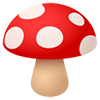

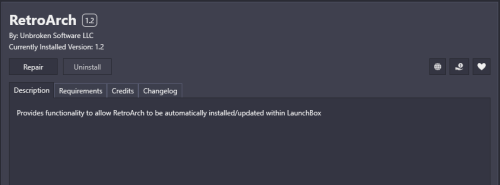
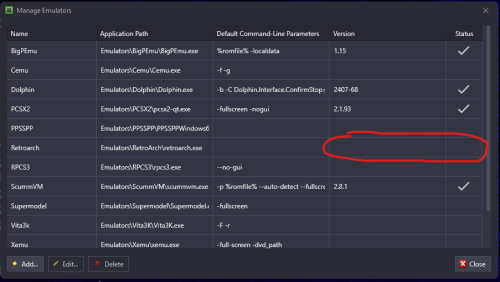
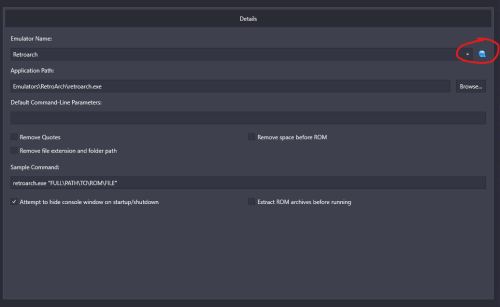

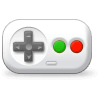
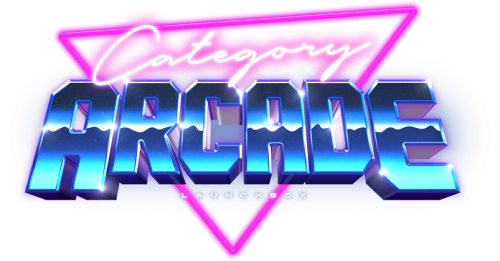
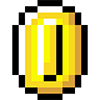

(NA).thumb.png.233373108b26bcb9a3a99a27fabc96cd.png)
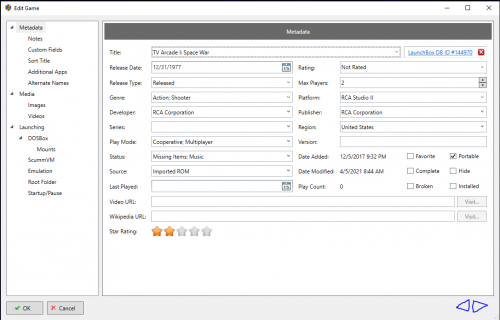
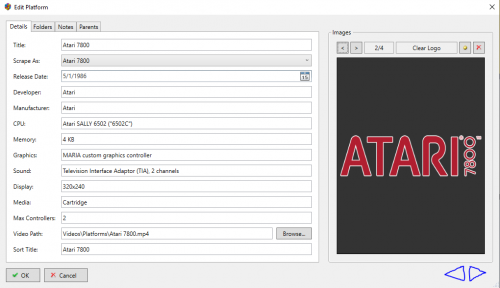
(NA).thumb.png.82b97b3c070bbed88830727546b2196c.png)
(1984).thumb.png.9290d42d915194187e00c504b32853f2.png)
(1993).thumb.png.92338802cdbdba5804e6c356407eb0b9.png)
(NA).thumb.png.8a7f3bb96d1b85dae001cf0f94e261c6.png)